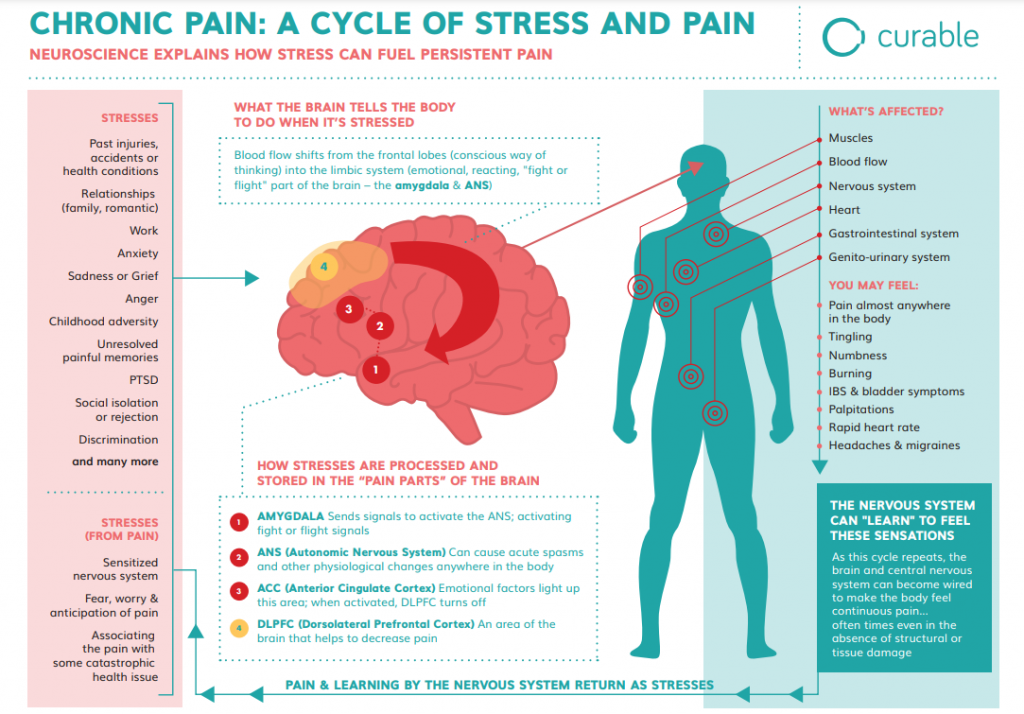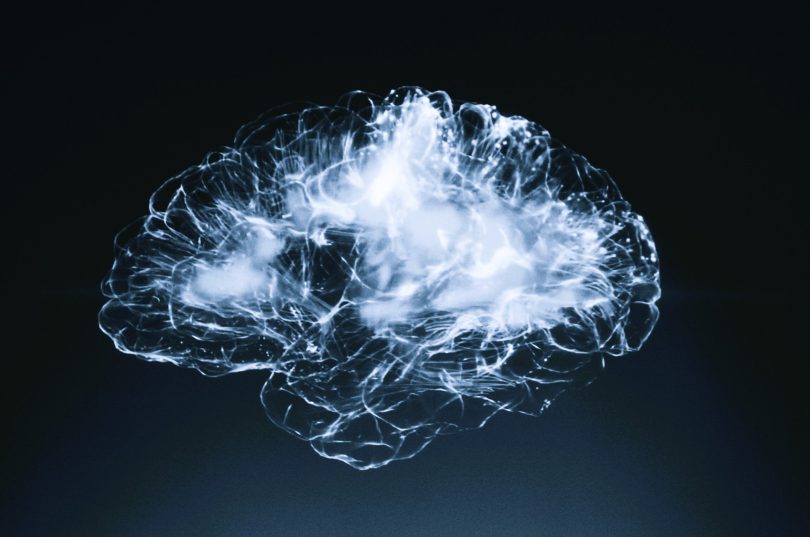Where does pain come from?
Imagine for a second that you are running in a field. Maybe you’re a jogger, or maybe you just had a sudden urge to skip and hop because it’s a sunny day and you just felt like it. Then, all of a sudden, your foot lands the wrong way and OUCH… you’ve twisted your ankle. This sends shooting pain through the ankle. You might try to stand on it carefully, but NOPE! You will be hopping home on one leg and might not be able to use this ankle for a while. Sounds like a logical train of events, right?
Now rewind to the beginning of the story: you are running in a field, but this time you’re being chased by something (imagine anything you could be running away from because it could be potentially dangerous). Now you might accidently land the wrong way and twist your ankle, but in this moment, since your brain registered the immediate danger, you might not feel any pain because the priority right now is to get you to safety first and you need to keep running.
So how does this work exactly? Basically, any pain we experience in our bodies, originates in our brains. You can envision the brain as the control panel of the body. Our central nervous system is the message courier, that registers situations through our senses, and sends messages to our brain. When it senses danger, for example, the brain responds with ‘appropriate’ measures.
In the first scenario, the appropriate measure is to send pain signals, so you slow down and take rest, which will protect the ankle from further damage and allow it to heal. This healing might take a few days or a few weeks depending on the amount of damage, and thus this will send pain signals for a fitting amount of time. In scenario 2, when there is a life-or-death situation, the brain will adapt and prioritise, because the damage in the ankle can wait when your survival is at stake. Our bodies are designed smart like that.
When the system goes haywire (i.e. chronic pain)
Normally pain should reduce after the applicable amount of time it takes for the body to heal. However, with all designs, there can be flaws. Our central nervous system is designed to protect us, and will always choose what it deems best, but unfortunately, in some cases, it can create false feedback loops that keep us stuck in pain. This is what happens in the case of chronic pain.
What we are dealing with here is also referred to as neuroplastic pain. When pain and fear can get locked into a feedback loop, this can cause neuroplastic pain to become chronic. The more you fear pain the more likely it is that your pain gets stuck and stays stuck. When you experience a pain, the brain creates a pain pathway and it has a very good memory for these pathways. The more a certain pain pathway is used, the stronger this neural pathway gets, and the easier it becomes for the brain to replicate that experience, regardless of whether there is a reason for it or not. In practice, when you have dealt with an injury, the brain can get stuck in this pain signal loop and repeat the same pain signals even after an injury has healed. In other words, the body is fine, but the brain creates pain anyway, which is a false alarm.
This doesn’t apply only to post-injury pain; it can also develop in case of psychological or emotional pain¹.
Examples of these forms of pain are:
- post-trauma (big or small),
- unprocessed or supressed emotions and,
- reoccurring stress².
When the brain senses psychological danger, it can misread the situation and respond with pain. This is how we can develop physical pain even if there’s no tissue damage. It is our brain misinterpreting the situation and misfiring pain signals as a consequence. A complete overview of this process can be found in the visual below².

The good news
Is there any uplifting part to this story? Yes, there is! “Fortunately, it is very possible to reverse neural pathway pain for the same reason that it began: neuroplasticity”, according to Howard Schubiner, MD, and author of Unlearn your Pain³. It is a matter of reactivating the non-pain pathways in the brain. These were the ones you once used, back in the days, when you did not experience the specific pain, but they have been made redundant, the lights turned off, collecting dust. However, they are still there, and can be reactivated. In the same way as you can create completely new pathways when you learn a new skill or create a new habit.
As David Hanscom, MD, writes in Psychology Today “It turns out that chronic pain is curable using strategies that calm down the nervous system and stimulate the formation of alternative neurological pathways”⁴. And that is the simple truth. The most chronic thing about it, is the way we have been treating it for years, which keeps sufferers stuck in pain. Yet, this is reversible, and the first step to do this is to make sure our brain knows we are safe. Here are some tips of how you can do this:
6 ways to send your brain messages of safety for when you are dealing with chronic pain:
- Cognitive soothing: you can literally talk to your brain telling it “I am safe”. This might seem odd at first, but it is the same as repeating thoughts of fear. By sending your brain messages like: “It’s going to be okay. I am okay. These feelings will pass”, thiswill calm down your nervous system and in time remove the need for pain signals.
- Somatic tracking: This is a way of getting in touch with your body and the sensations. Get curiousand mindfully feel what is going on – without fear, without judgement and without motive – you are simply getting to know the sensations and sitting with them, rather than wishing them away. By holding them, and breathing towards the feeling, you are again communicating messages of safety to your brain.
- Find what feels good: When you are used to focussing on the pain it can be hard to remember pleasant or neutral sensations. Take time to (re)focus on these. This can be: your breath, the sun on your face, warm water running over your hands, or focussing on a body part that does not hurt. Doing this helps train your brain to focus on other things than the pain and will help it remember you are safe.
- Graded exposure: to a simple activity that you would like to pick up again. By gradually exposing yourself, this will help to unpair the pain and fear in relation to the activity. It tells your brain that something it thinks is dangerous, is actually safe.
- Outcome independence: when you start with graded exposure it is important to not get too fixated on a perfect outcome. It is about doing the activity regardless of the outcome and being okay whether pain or symptoms are present or not. Practice saying “So what?” when pain comes up. This helps you feel empowered, leaving less room for fear.
- Cultivating joy: engaging in activities that bring you joy, is another great way to send your brain messages of safety. This can include anything that makes you smile or laugh, so it does not even need to be a physical activity.
Sources
- https://www.jpain.org/action/showPdf?pii=S1526-5900%2816%2900018-3
- https://storage.googleapis.com/curable-www/images/web/curable-poster-chronic-pain_a-cycle-of-stress-and-pain.pdf
- https://www.psychologytoday.com/us/blog/unlearn-your-pain/201404/the-role-neuroplasticity-in-pain-better-or-worse
- https://www.psychologytoday.com/us/blog/unlearn-your-pain/201707/john-sarno-md-american-hero



